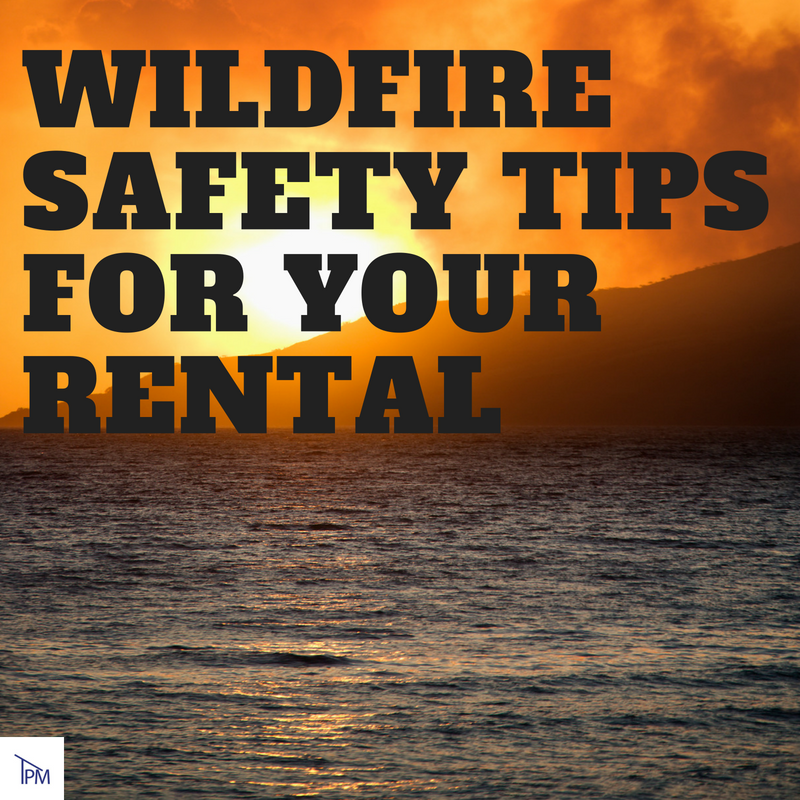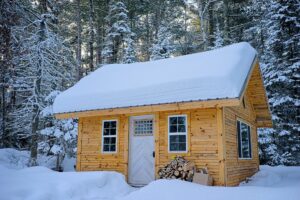Wildfire Safety Tips for your Rental Property
With the drier than typical winter, one would expect there to be less of a risk when it comes to wildfires. However, that is not the case, as there was sufficient moisture to encourage a substantial amount of new vegetation growth, which can become quite dangerous under the warm summer conditions. However, taking a few moments to review some fire safety and wildfire prevention tips can help you to identify which areas of your home may be at biggest risk for sparking or fueling a wildfire.

Mitigate your fire risk with these tips.
Examine Your Choice of Landscaping Material
Lush landscaping can be quite pleasing to the eye, but certain plants and landscaping options are better than others when it comes to fire weather safety. According to the folks over at Better Homes & Gardens, when designing your garden or backyard, the use of wide bricks or a paved pathway can help to prevent a fire from spreading from one side to the other, with four feet the recommended width of the path. If you are planting new shrubs or trees and live in an area that is prone to dry weather and high fire danger days, it is smarter to select deciduous trees, such as oak, hickory, and maple, as these produce less dead wood when compared with, say, a juniper or spruce tree. Succulents and cacti are also wise choices when it comes to outdoor plants, since these are considered to have a higher fire resistance level when compared to drier varieties of landscape options. These plants and trees can help to provide you with defensible space around your property, which can reduce the risk of damage to your home during a local wildfire.
Building Materials
In a 2008 report from the Federal Emergency Management Agency (FEMA), selecting building materials that exceed the state and local safety codes for wildfire mitigation will help to reduce the risk of damage to your property during a wildfire. Roof materials should be comprised of noncombustible coverings that are rated a Class A, which helps to provide an added layer of protection to one of the most vulnerable sections of your home. Additionally, the gutters and downspouts of your home should be cleaned regularly to reduce the level of debris buildup, which can become kindling wildfires.
Outdoor Decoration Choices
During the cool summer nights, gathering around a fire ring outdoors with friends can be quite relaxing and even a summer tradition, but these can also be quite dangerous in terms of the fire risk they pose. It is recommended that any fire rings or fire pits be located a minimum of 15 feet from shrubs, trees, and buildings. In addition, ensure that there is sufficient overhead height for the fire and any embers that may fly upwards as they can start fires in low-hanging branches.
How Property Managers Can Assist in Fire Prevention on Your Property
If you are renting out your property, it can be difficult to ensure that fire weather safety precautions have been maintained, especially if you are not located near your rental property. As such, it can be easier to hire someone to be your eyes on the ground, so to speak. Property managers can assist you in the fire prevention around your property through ensuring that your property is clean and maintained, both inside and out. This includes making sure that your rental home has a minimum number of working smoke detectors and fire alarms, as well as keeping a defensible space around your rental property. Property managers can also work with tenants on fire prevention and safety measures to ensure that all mitigation and preventative measures have been taken to protect your investment.
Conclusion
Whether you decide to take on the responsibility for fire weather safety on your rental property, or you choose a property management company to take on this role, fire weather safety is an important part of owning property. It can be a time-consuming task, but when trouble arises, you will stand a higher chance of having your property survive a wildfire if fire prevention and mitigation steps are taken, before danger comes knocking.


